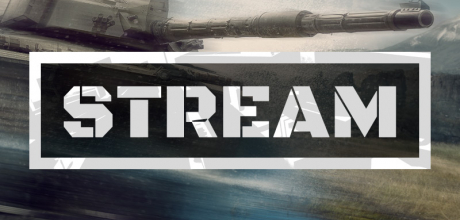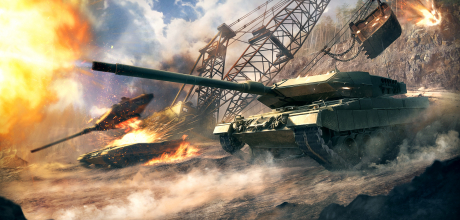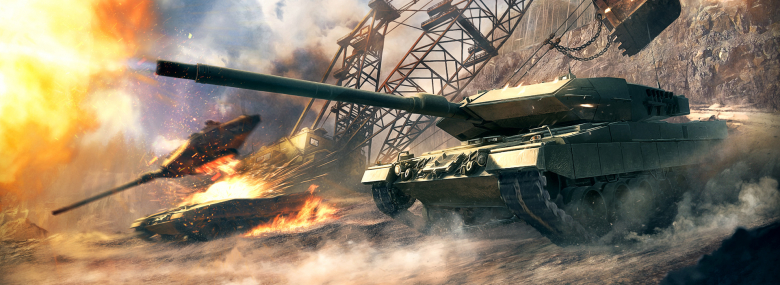
Hey Commanders,
In our last developer article, we focused on the way damage and health will scale in balance 2.0, while also outlining how these changes will play out when combined with our newly updated ammo mechanics. This time around, we will cover changes coming to Armored Warfare’s other core combat mechanics; including armor, accuracy, mobility, and counter measures. While a few of these changes are simply an evolution of mechanics we shipped with, most of these changes have come about specifically to address issues raised by our players concerning mechanics that simply weren't delivering the experience we wanted.

Just as we knew we would need to adjust shell damage and vehicle hit points against each other across the board, we also understood how imperative it was for us to address accuracy bonus stacking and pixel sized weak points in our armor models at the same time. Both mechanics were feeding into each other to create an unhealthy gameplay loop at higher tiers. With vehicles as accurate as they were, armor weak points needed to be made extremely small, otherwise they’d be too easy to hit. While we could have adjusted the accuracy numbers and bonuses across the board quickly, it was clear that we could not tone down accuracy bonus stacking without also comprehensively adjusting armor models at the same time.
Accuracy and Ammunition
With Balance 2.0, we have managed to tackle both issues. The available accuracy bonuses, including aim time bonuses, have been toned down to not completely remove accuracy as a relevant stat. We also made some changes to shot distribution and expanded the variety in accuracy between the various types of ammunition available. At the same time, our vehicle designers began doing a pass on every single armored vehicle across all the tiers to bring vehicle armor up to date with our new values.
Hitting the right range on accuracy is important to maintain the gameplay feel we enjoy in Armored Warfare. If accuracy is too low, frustration with random shot distribution can set in. If accuracy gets to be too high, then unarmed vehicles who rely on speed to dodge less accurate shots have almost no chance of not getting hit, and armored vehicles must be setup with tiny weak points or else their armor is rendered mostly irrelevant. With Balance 2.0, we feel we have achieved the right balance between the two extremes.

In general, accuracy gets noticeably better as you go up the tiers, but with lower accuracy bonuses available, it is no longer possible to remove accuracy as a concern all together. Having a small amount of shot distribution, even in high tiers, is intentional as this allows us to change the way armor weak points are designed on MBTs. However, we have also improved base accuracy on the move in general on higher tier vehicles, reflecting the technology those more modern machines possess to improve gun stabilization. In this way, gameplay evolves over the tiers. Lower tier vehicles will tend to need to come to a stop and zero in their targeting reticle to take a shot, though in many cases, we have speed up their aim times. Higher tier vehicles of all classes will be able to take shots while on the move and maintain good accuracy, resulting in faster, more mobile matches in high tier matches. That being said, tier for tier, Light Tanks will still retain the highest accuracy while on the move.
As discussed in the last article, your choice in ammunition also has an impact on how accurate the shots you fire are. Mid and high tier AP shells also have a tighter shell distribution than HEAT, HESH, and HE variants. This means that not only will higher tier AP shells have higher shell velocity, they will also fire toward the center of your accuracy circle more frequently than the other shell types. When you need precision above all else, APFSDS rounds are the way to go.
Another mechanism we are introducing is Missile Noise. Missile Noise is effectively the ATGM equivalent of bloom or accuracy spread. When a player fires an ATGM, it will no longer fly towards its target in a perfectly straight line. Instead, the missile's trajectory will now slightly fluctuate within the aiming reticle until it reaches its target. As players progress up the tiers, historical ATGM improvements will result in higher tier ATGMs exhibiting less missile noise - making it easier for them to consistently hit the targeted area.
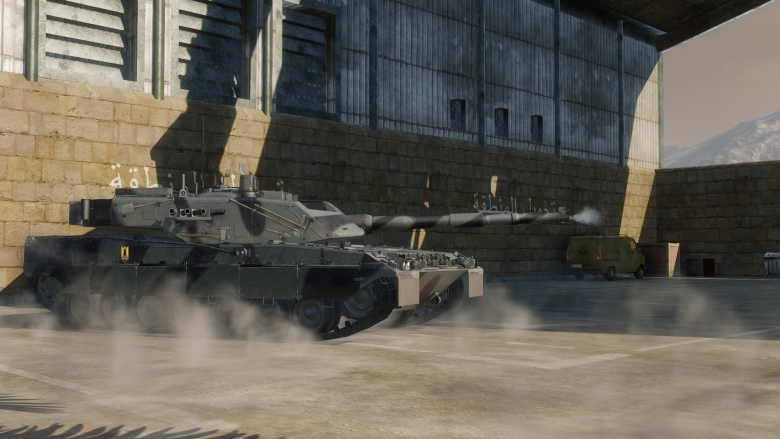
One final major change made to ammunition is that shell normalization has been completely removed. Shell normalization was the mechanic of a shell adjusting its angle favorably by about 5 degrees upon impact with a vehicle's armor. This slight adjustment in shell trajectory resulted in a variety of unintended side effects. For example, many of the single pixel weak points on vehicles were not by design but rather a byproduct of a shell's trajectory adjusting slightly due to normalization and flying into a weak point somewhere else on the vehicle. This was also famously noticeable during version 0.15, when it was easy to shoot the front treads of many MBTs at a certain angle that would cause the shell to normalize into the under armored belly of certain vehicles. Removing shell normalization better reflects the behavior of modern ammunition. It also makes armor angling a more viable tactic as your angled armor is no longer being partially defeated by the normalization mechanic.
Armor Changes
Adjusting all the vehicle armor for Balance 2.0 has been a massive undertaking as we bring vehicle armor models up to date with a higher set of standards to accompany this major update. In the course of these updates, the following changes were made to the vehicle armor throughout the game:
- The number of armor thickness variations on an armor model was increased roughly 2.5 times where appropriate. For example, in the live game, a vehicle might only have around 6 different armor thickness values on its turret. In balance 2.0, it might have 14 distinct armor thickness values, allowing our designers to better represent real world armor data that we have collected.
- For 0.19, suspension components have been added to the armor model for all MBTS and LTS. This means that firing into the struts or visible suspension assemblies will no longer result in shells that seem to pass through without hitting anything. For most vehicles, shots that only hit suspension will count as damage toward that vehicle's wheels or tracks and not inflict hull damage.
- Driver hatch weak points have been removed from vehicles that don't have weak hatches in the real world as we are no longer relying on those hatches to be a weak point on well armored vehicles.
- For most vehicles, armor thickness has increased while composition modifiers have decreased as we bring the armor values closer in line with their real-world measurements. Overall, the final effective thickness will tend to remain roughly the same on the thickest parts of vehicles, but this can result in thicker side armor on some vehicles.
- Many realistic weak points in vehicle armor have been introduced, typically around the turret ring and mantlet areas, and most lower glacis. The specifics on these weak points will vary from vehicle to vehicle and are something to be learned and mastered by gaining experience with testing them in matches.
The overall feel of high tier MBTs will involve a reduced immunity to taking any damage from the front. They will have weak points that can be targeted (provided they aren’t being protected), especially if an enemy player takes the time to let their reticle reach maximum accuracy. On the flip side, MBTs will continue to have the highest hit point pools among the classes and like all vehicles in Balance 2.0, they will have access to many charges of smoke grenades or smoke exhaust to conceal themselves when under concentrated fire. MBT survival will come down to positioning, angling, using terrain and other hard cover to cover weak points, and proper use of smoke grenades to make themselves less of a target at key moments. While some MBTs will still be better defended in the front than others, simply depending on near immunity to damage in the front of a MBT will no longer be a viable tactic.
Core Mechanics Changes
Apart from the abovementioned issues, Update 0.19 is bringing in other significant changes which will have a profound impact on most core gameplay systems.
We’ve made some significant changes to vehicle mobility for all classes. In Update 0.19, vehicles will be more affected by the type of terrain they are driving on – this will be especially important for wheeled vehicles. Just like in real life, vehicles with wheels will be considerably slower in soft terrain than those with tracks. The choices which path to take will be much more important. Overall, we are looking at the following changes in Update 0.19:
- MBT class vehicles have had their forward acceleration improved so they reach their maximum speeds slightly faster, but many will have their hull traverse speeds toned down in order to keep them vulnerable to a properly executed flanking maneuver. MBTs will also continue to perform better in off-road conditions when compared to wheeled vehicles
- Wheeled vehicles of any class (but especially Tank Destroyers) will be slower off-road, but will be the most mobile vehicles in the game on paved surfaces
- Light Tanks and tracked AFVs will have the best off-road performance in the game, but their top speed will be inferior to wheeled vehicles on hard surfaces. Light Tanks are also more agile and accelerate faster in Balance 2.0, allowing them to flank heavier opponents
In short, using roads will matter. Furthermore, all maximum speeds have been rebalanced to better reflect their real life counterparts. We also made another pass on wheeled vehicle mechanics – players should find them quite easy to control without getting that “glued to the ground” feeling. Wheels now turn and relax more slowly, especially on heavier vehicles. Heavier vehicles now also have more “pull” when recovering from a turn at high speed. Finally, wheeled vehicle steering is now also slower to respond at high speeds - preventing quick 90-degree turns and increasing control.

The ability to immobilize (or “de-tracking”, as it is sometimes known) is a key factor when balancing vehicle mobility as well. Before 0.19, we felt that this mechanic didn’t play a sufficient part in the game -at least in a way which could be properly taken advantage of by an attacker. It was simply way too easy for a tracked vehicle to evade punishment for being immobilized, while wheeled vehicles suffered almost no tangible impact on performance when a wheel was destroyed. In real life, track or wheel repair is tedious work that often takes hours. Naturally, we aren’t seeking to replicate that tediousness in Armored Warfare, but a “mobility kill” is an important enough element on the battlefield that we felt it needed to be better represented.
Based on these conclusions, we started by making track and wheel repair times longer. Additionally, wheeled vehicles will now be much more seriously hampered by wheel damage and loss (worse acceleration and handling) and the loss of three wheels now causes the vehicle to be completely immobilized until one of the three wheels has been repaired.
Track damage behavior has also been updated with modified weak spots. The weak points that used to make up the entire front and back of the track have now been reduced to only the front and back sprocket and idler wheels. Since the size of these weak points has been reduced, the bonus damage that can be done to tracks from hitting these spots has also been greatly increased, making vehicles much easier to track if you aim carefully.
Altogether, these changes mean that targeting enemy vehicle’s mobility will be a key tactic when attempting to gain a positional advantage over an opponent. Since tracking will now be a much more viable tactic, with heavier penalties, we’ve also added an additional repair consumable which provides players with a three-charge full repair kit on a moderate cooldown. On a side note, we’ve added a similar consumable for healing crew members multiple times as well.
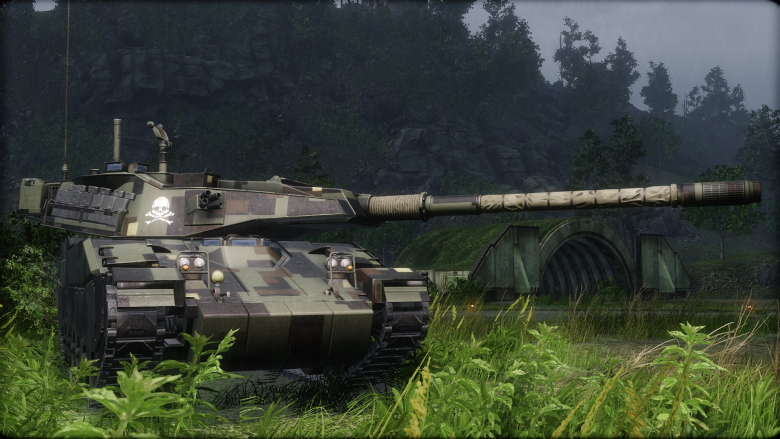
With changes being made to ATGMs and ERA, we felt it was also appropriate to evaluate the functionality of APS and tone down some of its effectiveness, particularly at higher tiers. As it stands, APS systems feel too effective and can often make guided missiles feel practically useless when factoring in ERA, cage and composite armor. To tone down the effectiveness of APS and promote active gameplay, we’ve decided to remove the 360 degrees of impunity APS currently offers in favor of a more direction and distance based system.
In Update 0.19, APS mechanics will be further split between the Hard-kill and Soft-kill systems. Both types will only work in 60 degree frontal angle, depending on the turret. In other words, looking at where your main gun is pointing, APS will work in a 30-degree angle from the gun axis to each side of the gun. This will allow ATGM-firing vehicles to ambush even tanks equipped with APS system without the frustration of having your missile shot down by a player that is not even aware of your presence.
Soft-kill systems now only work at a distance of 250 meters or greater - firing inside that distance will not trigger it. They also have a failure chance now, which increases depending on Tier difference between the APS carrier and the launcher – the higher the Tier the launcher is, the bigger the chance of APS failure. We implemented this mechanism to represent the missile technology upgrades – modern missiles are less prone to being influenced by older soft-kill systems due to their sophistication.
Hard-kill systems now only work at a distance of 200 meters or greater and have no failure rate, but these systems only appear on very high Tier vehicles.
Both systems still use charges with cooldowns.
APS is not the only protective mechanism receiving an update with Balance 2.0, we’re also continuing to update Smoke mechanics as well in order to encourage more dynamic gameplay.
To start with, all vehicles now come with smoke as standard equipment, either in the form of a standard smoke grenade launcher, or via a new mechanism called Engine Smoke. Engine Smoke is basically an in-game representation of the real-life ability of some vehicles to generate smoke by injecting diesel or other fuels into the exhaust system, creating a thick cloud to conceal itself.
Unlike traditional smoke launchers which can be aimed and dispense smoke in front of the vehicle, engine smoke comes from the vehicle itself and shrouds a small area around the vehicle in a circular smoke cloud.
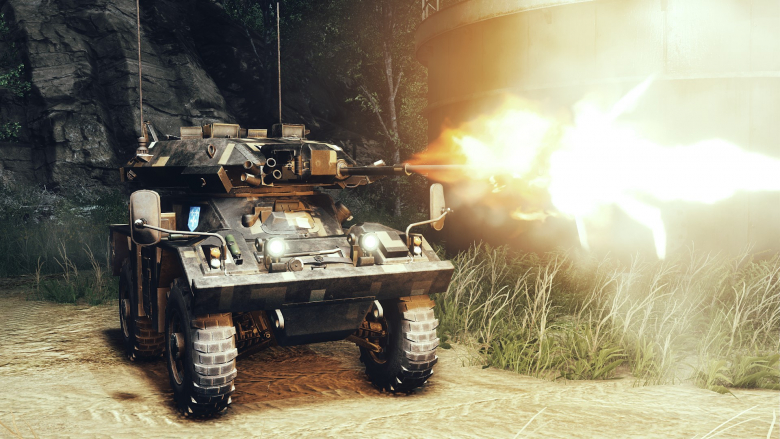
All standard smoke launchers and generators come with 2 charges on a 45-second cooldown, although it is possible to upgrade Smoke performance depending on the class. Upgraded MBT and SPG launchers and generators provide 15 charges on a 45-second cooldown, whereas upgraded AFV and TD launchers and generators provide 15 charges loaded in a 2-round clip on a 35-second cooldown. Last but not least, upgraded LT launchers and generators provide 15 charges loaded in a 3-round clip on a 45 second cooldown.
Finally, all ERA kits have undergone some changes and have been separated into two types:
- “Light” ERA that provides no extra armor beyond the standard ERA ability
- “Heavy” ERA that provides extra armor (in the form of spaced armor) as well as the standard ERA ability
The largest ERA change is that unlike before Update 0.19, where striking ERA with a HEAT warhead would completely negate it, ERA now only heavily reduces the effectiveness of HEAT rounds by reducing their incoming shell penetration. As a result, given enough difference between the effectiveness of the ERA and the shell’s penetration, it will be possible for a HEAT round to sometimes penetrate the ERA and the armor underneath.
Retrofits, Crews and Commanders
All of these core mechanics changes would, however, come up short without a comprehensive overhaul of every other major system, including Retrofits, Crews and Commanders.
When it comes to Retrofits, we have redesigned them in order to reduce the inherent imbalances the previous iteration of the system caused, and to make the bonuses they provide easier for players to understand. As a result, some retrofits have been redesigned while others have been removed altogether. Here is a list of the specific changes we've made to the system:
- Vehicles now come with 3 retrofit slots stock. There is no longer a need to unlock slots in the upgrade trees
- Slots no longer have any sort of associated "Type". All slots are universal, and can equip any retrofit the player wants
- Retrofits no longer have secondary bonus stats, and there is a greater emphasis on retrofits changing gameplay functionality, rather than just providing a pure stat buff
- There is no longer any concept of retrofit quality (Mk.1, Mk.2, Mk.3). Retrofits now come with their maximum benefit and cannot be upgraded
- All retrofits are now unlocked from the start, and their prices have been adjusted to be consistent between tiers
Because of these changes, we’ve reduced the number of retrofits players currently have access to, but have increased their overall usefulness and utility. After the release of Update 0.19, we will continue to evaluate our available retrofits for future opportunities to add more situational retrofits which further encourage player choice and preferred playstyles.
Crew and Commander systems will be temporarily simplified as well. All commanders have been updated with a more limited set of skills in order to reduce the amount of bonus stacking that was happening for many specific stats. The two main stats we wanted to prevent stacking were Reload Speed and Maximum Accuracy (small aim circle), so skills that modified these stats were targeted first for reduction or removal. Other skills have also been swapped out while they are being reviewed. Similarly, several of the existing crew skills have also been reduced using the same principals in mind.

It’s important to stress that these changes are meant to be a temporary stop-gap as we work on overhauling the commander system with an emphasis on more choice and varied skill trees based on the balance goals set forth in Balance 2.0. These changes will be compensated by a thorough Retrofit, Commander XP and Crew XP refund. Specifics on our upcoming compensation plan can be found in our Balance 2.0 Progression article.
Altogether, these changes represent a major overhaul of many of Armored Warfare’s core concepts. While they are certainly drastic and far reaching, ultimately we feel these are the types of changes needed to usher in a new ‘balance era’ for AW while still retaining the faster, tactical gameplay which players have come to expect and love.
Spotting System
We are planning to introduce several changes to the Spotting System in order to accentuate vehicle roles better.
For starters, we will slightly increase the viewrange for vehicles expected to act as spotters. We will also introduce a slow progression of viewrange increases matching technological advancements. The top viewrange will shift from the current 400-420 meters to 450-460 meters. We will also introduce some smaller improvements to spotting retrofits and add the option to unlock them in the appropriate tech lines.
Light Tanks (that are intended to spot while moving) will receive retrofits buffing viewrange on the move while AFVs will focus more on passive scouting. Altogether, these changes will lead to a better sense of progression without having MBTs feel blind.
As for the issue of vehicles instantly appearing, we are planning to introduce two mechanisms to mitigate that:
- We’ll re-introduce a shorter version of the period where – upon losing spotting contact – the vehicle silhouette disappears but the model is still visible. The time period will be very short (approximately 1 second) but it will lead to the better understanding that the target will disappear soon
- We’ll increase the delay between getting spotted and the “spotted” icon appearing to approximately 2.5 seconds in order to reduce the effectiveness of various “peek out – spotted icon appears – hide again” tactics.
Our goal is to introduce an intuitive spotting system without the often-criticized “disappearing tank” side-effects that will, at the same time, support sniping without excessive passive gameplay (also known as “camping”) all across the board.
For more information about Balance 2.0, please visit our dedicated website page.




